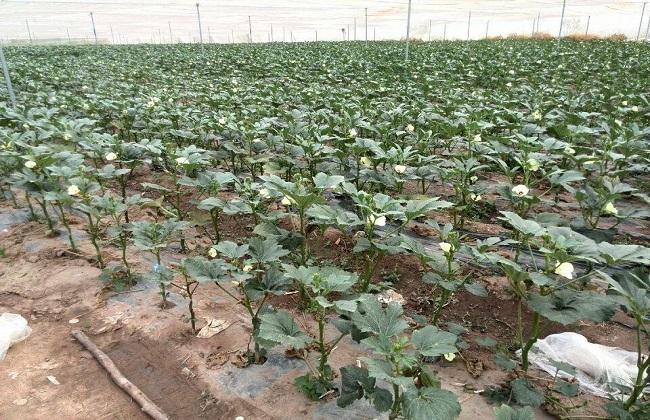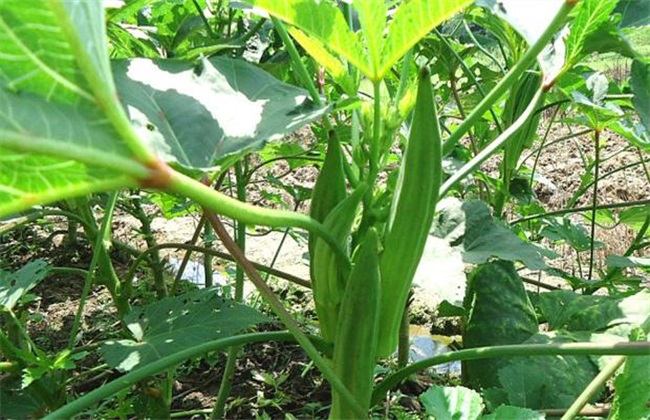How to prune okra
Okra planting in our country is very common, as people pay more and more attention to health, okra, a vegetable with high nutritional value and unique taste, is more and more popular with people. When growing okra, pruning is essential if you want to increase yield. So how do we prune okra? Today, Xiaobian brought you the pruning technology of okra. Let's take a look at it together!

1. Trimming and topping
Okra's growth ability is relatively strong, so the growth rate of branches and leaves is fast, and the number of branches is also relatively large. Therefore, when planting okra, whenever the okra grows to about 1 meter, it should be pruned. At this time, the main pruning method is to top, cut the top of the branch about 20 cm, mainly according to the actual situation of okra branches reasonable adjustment of pruning length. Then appropriate pruning okra germination, inhibit the growth of vegetative branches. preventing excessive growth of okra plants caused by excessive growth, promoting germination of lateral buds, and improving the fruiting rate of okra plants.
2. Pruning in growth period
When we plant okra, we should pay attention to the growth of okra plants. Especially the growth of branches, for some prosperous long excessive length, too long too dense branches should be pruned in time. And pay attention to regular, because just said, okra growth rate is very fast. Therefore, if it is not pruned in time, it will lead to excessive growth of branches, resulting in poor permeability in the field and affecting the flowering and fruiting of okra. However, we should also pay attention to the intensity of pruning, mainly light cutting, lateral branches can retain about three branches, otherwise it will also affect the amount of flowers and fruits.
3. Pruning after fruit picking
We should not only prune the okra during its growth, but also prune it properly after harvest. Every time after fruit picking, we must remove the old leaves, weak leaves and sick leaves on the tender fruit branches in time. Then pay attention to gradually pruning some old branches with low fruit rate to prevent excessive consumption of nutrients and increase planting costs. And this can also concentrate nutrients on healthy branches, subsequent tender fruit to provide adequate nutrition. This lays the foundation for flowering and fruiting the next year, but it is also necessary to pay attention not to cut again to prevent excessive nutrient consumption.
4, pruning precautions
When we prune, we should pay attention to the surrounding environment and not prune on rainy days. Because the bacteria breeding in rainy days is more, so improper pruning, it is easy to cause the wound to be infected by bacteria, resulting in the wound can not heal in time, and gradually rot. This will cause plant death and affect planting efficiency. And we cannot water and fertilize immediately after pruning to avoid excessive water nutrition, causing nutrient overflow, and it is easy to cause plant disease. Therefore, after pruning, we generally wait until the pruning wound gradually heals before carrying out water and fertilizer management.
This is a simple introduction to how okra prunes. Okra pruning work in planting is essential, we must pay more attention. Today's introduction is here, this article is for reference only, thank you for reading and support.
Related
- Where is it suitable to grow horseradish in China? it is expected to see the middle altitude horseradish in Alishan.
- How to prevent tomato virus disease reasonably? (Control methods included)
- Many people like to plant towel gourd on the balcony. What are the main points of this method and management?
- What crops can chili peppers be mixed with?
- Fertilization techniques and matters needing attention in Tomato
- What are the grafting techniques for peach seedlings in spring?
- Harm and control methods of root swelling disease of Chinese cabbage
- What are the pests of sweet potatoes? How to prevent and cure it?
- Symptoms, causes and Control methods of navel Rot in Tomato
- The cause of "Cucumber rotten bibcock" in Farmers' planting Cucumber and its Control Plan



